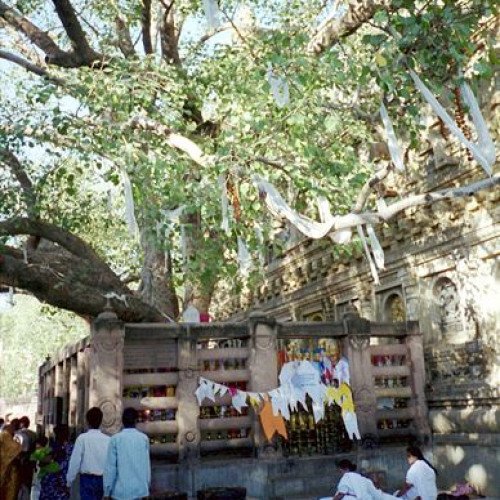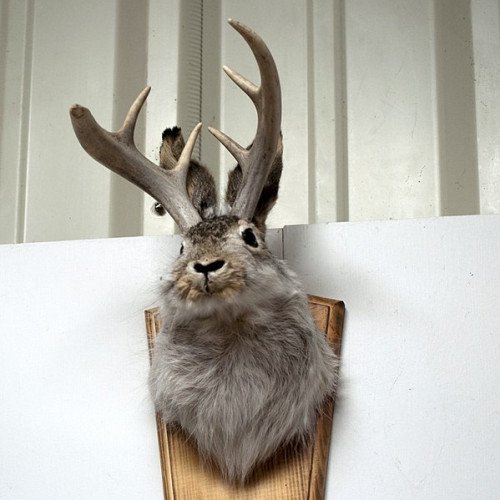Trees in mythology vs Jackalope

Trees in mythology
Trees are significant in many of the world's mythologies, and have been given deep and sacred meanings throughout the ages. Human beings, observing the growth and death of trees, and the annual death and revival of their foliage, have often seen them as powerful symbols of growth, death and rebirth. Evergreen trees, which largely stay green throughout these cycles, are sometimes considered symbols of the eternal, immortality or fertility. The image of the Tree of life or world tree occurs in many mythologies.Examples include the banyan and the sacred fig (Ficus religiosa) in Hinduism, Buddhism and Jainism, the tree of the knowledge of good and evil of Judaism and Christianity. In folk religion and folklore, trees are often said to be the homes of tree spirits. Germanic mythology as well as Celtic polytheism both appear to have involved cultic practice in sacred groves, especially grove of oak. The term druid itself possibly derives from the Celtic word for oak. The Egyptian Book of the Dead mentions sycamores as part of the scenery where the soul of the deceased finds blissful repose.The presence of trees in myth sometimes occurs in connection to the concept of the sacred tree and the sacred grove. Trees are an attribute of the archetypical locus amoenus.
Statistics for this Xoptio

Jackalope
The jackalope is a mythical animal of North American folklore (a fearsome critter) described as a jackrabbit with antelope horns. The word jackalope is a portmanteau of jackrabbit and antelope. Many jackalope taxidermy mounts, including the original, are made with deer antlers. In the 1930s, Douglas Herrick and his brother, hunters with taxidermy skills, popularized the American jackalope by grafting deer antlers onto a jackrabbit carcass and selling the combination to a local hotel in Douglas, Wyoming. Thereafter, they made and sold many similar jackalopes to a retail outlet in South Dakota, and another taxidermist continues to manufacture the horned rabbits in the 21st century. Stuffed and mounted, jackalopes are found in many bars and other places in the United States; stores catering to tourists sell jackalope postcards and other paraphernalia, and commercial entities in America and elsewhere have used the word jackalope or a jackalope logo as part of their marketing strategies. The jackalope has appeared in published stories, poems, television shows, video games, and a low-budget mockumentary film. The Wyoming Legislature has considered bills to make the jackalope the state's official mythological creature. The underlying legend of the jackalope, upon which the Wyoming taxidermists were building, may be related to similar stories in other cultures and other historical times. Researchers suggest that at least some of the tales of horned hares were inspired by sightings of rabbits infected with the Shope papilloma virus. It causes horn- and antler-like tumors to grow in various places on a rabbit's head and body. Folklorists see the jackalope as one of a group of fabled creatures common to American culture since Colonial days. These appear in tall tales about hodags, giant turtles, Bigfoot, and many other mysterious beasts and in novels like Moby-Dick. The tales lend themselves to comic hoaxing by entrepreneurs who seek attention for their products, their persons, or their towns.